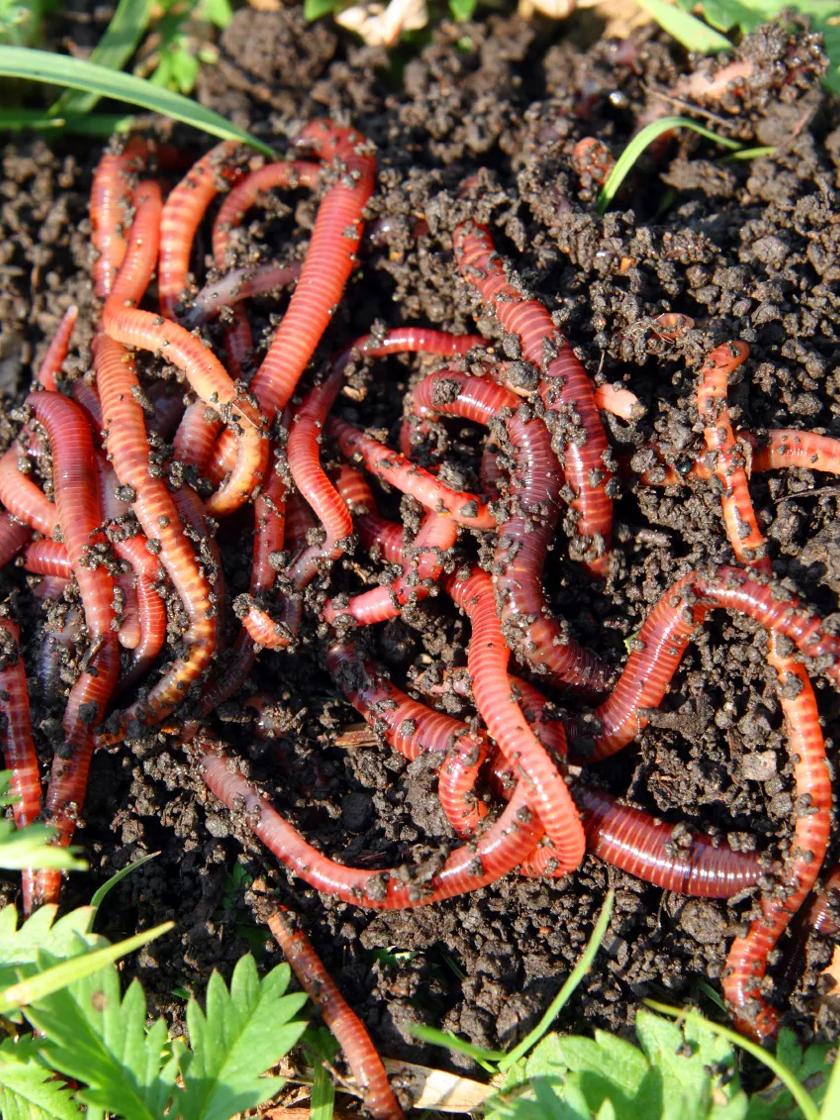Red Wigglers: The Unsung Heroes of Organic Waste Recycling
Red wigglers, or Eisenia fetida, act as vital representatives in the organic waste recycling procedure, changing thrown out products into useful vermicompost. Their effective failure of raw material not only enhances soil top quality but also adds to sustainable waste management methods. As the world increasingly seeks services to fight waste buildup and enhance agricultural performance, understanding the function of these worms becomes vital. What devices permit them to flourish in garden compost environments, and just how can they be successfully made use of in both property and industrial setups? Exploring these inquiries exposes the wider effects of vermicomposting in our ecological landscape.
What Are Red Wigglers?
The amazing strength of red wigglers, scientifically understood as Eisenia fetida, highlights their vital role in organic waste recycling. These little, reddish-brown earthworms are commonly found in decaying raw material, such as compost heaps and manure stacks. Lake Hickory Bait. Unlike other earthworm species, red wigglers flourish in nutrient-rich environments and are very efficient at damaging down organic materials, making them important for vermicomposting

(Red Wiggler Express)Along with their duty in waste decrease, red wigglers add to dirt wellness by boosting soil framework and aeration with their tunneling tasks (Lake Hickory Bait). Their visibility in composting systems not just boosts decomposition prices however likewise promotes a sustainable technique to squander monitoring, highlighting their value in ecological conservation initiatives
Benefits of Composting With Worms
Composting with worms, especially red wigglers, provides various advantages that boost both waste monitoring and dirt wellness. Initially, these worms efficiently damage down natural waste, converting it into nutrient-rich vermicompost that enriches soil. This procedure increases decay, enabling a quicker recycling of kitchen scraps and various other organic products contrasted to standard composting techniques.
Additionally, the vermicompost generated by red wigglers is including beneficial microbes, which assist improve soil structure, aeration, and moisture retention. This boosts the total wellness of plants, promoting vigorous development and increased returns in yards and agricultural setups. Additionally, the use of worms in composting minimizes the production of greenhouse gases, such as methane, adding to an extra lasting waste administration system.

How to Start Vermicomposting
Establishing a vermicomposting system is an uncomplicated process that can produce significant benefits for both waste management and soil enrichment. To begin, select an ideal container, such as a plastic container or wood box, with ample air flow openings to make sure appropriate air movement. The measurements ought to ideally be around 2 feet by 3 feet, allowing adequate room for the worms to prosper.
Following, prepare bedding product, which can consist of shredded newspaper, cardboard, or coconut coir. This bedding must be dampened to create an ideal habitat for the worms. As soon as the bed linen is in place, present red wigglers (Eisenia fetida) right into the container, generally around one pound of worms for every single square foot of surface area.
Complying with the placement of worms, include organic waste, such as vegetables and fruit scraps, coffee premises, and smashed eggshells. Stay clear of adding dairy products, meat, or oils, as these can develop odors and draw in insects. Lastly, position the container in a shaded, temperature-controlled area to keep ideal problems for worm task. With these actions, you will efficiently start a vermicomposting system that contributes to sustainable waste monitoring and improves your dirt.
Keeping a Healthy And Balanced Worm Bin
(Red Wiggler Express)Maintaining a worm bin growing needs normal interest and treatment to make sure the health and wellness of the red wigglers and the effectiveness of the composting process. Correct upkeep begins with checking the wetness degrees; the bin needs to be moist yet not soaked. A great general rule is to keep a consistency similar to a wrung-out sponge.
Carefully blending the bedding and food scraps every few weeks prevents compaction and guarantees that all worms have access to oxygen. In addition, it is crucial to feed the worms appropriately.
If the bin becomes as well hot or cool, the worms may end up being stressed. By diligently handling these aspects, one can keep a durable and efficient worm bin.
Influence on Sustainable Living
The successful upkeep of a worm container not just benefits the wellness of red wigglers yet also adds dramatically to lasting living practices. By recycling organic waste, such as cooking area scraps and lawn particles, Red Wiggler Express red wigglers assist divert significant quantities of product from garbage dumps. This reduction in waste not only reduces greenhouse gas exhausts yet additionally reduces the ecological burden related to waste administration.
Additionally, the spreadings produced by red wigglers act as a nutrient-rich natural plant food, enhancing soil health and wellness and advertising plant development. This natural option to chemical plant foods sustains sustainable farming and gardening methods, decreasing reliance on synthetic inputs that can hurt ecosystems. Additionally, worm composting cultivates recognition of waste monitoring, urging people and areas to embrace even more sustainable behaviors.

Conclusion
In summary, red wigglers work as vital contributors to natural waste reusing via their reliable disintegration of organic products. Their ability to create nutrient-rich vermicompost enhances soil wellness and sustains sustainable farming practices. By incorporating vermicomposting right into waste monitoring approaches, people and areas can considerably decrease waste while promoting environmental sustainability. The role of Eisenia fetida in cultivating healthy environments emphasizes the value of these organisms in achieving sustainable living and enhancing soil fertility.